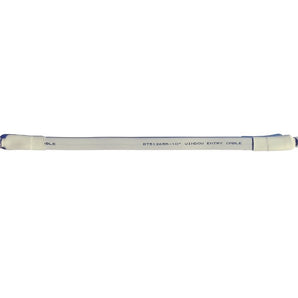When you think of safety systems in buildings, your first thoughts might be about having adequate fire escapes, sprinkler systems, and fire extinguishers in place. These are crucial for building safety, but there is a largely overlooked aspect of building safety that has not received much attention in South Africa—the ability to communicate effectively in case of an emergency inside a building.
Building materials such as concrete, metal shielding, thick walls, and modern energy-efficient construction all play factors that severely weaken radio connectivity. Outside factors such as Cell Tower Distance, Interference, and even Weather can also impact signal strength. These challenges can lead to limited or no service in critical locations inside a building such as elevators, parking garages, and stairwells.
In an emergency, firefighters, police, emergency medical services (EMS), and other disaster response agencies need reliable two-way communication to respond effectively. When emergency service personnel rush into a situation that demands immediate action, any disruption in radio communication hampers their efficiency to protect lives as well as safeguard their own. Systems and regulations that improve in-building public safety radio coverage are critical to aid these first responders in saving lives.
Emergency Services Rely On Communication Systems

During emergencies, especially when electricity fails, instant communication is critical. Consider recent incidents such as the building fires such as the Parliament building incident in 2022, many robberies carried out in a large commercial buildings, and the devastation of natural disasters- such as the Knysna fires or Durban floods.
Without clear communication, chaos ensues: people in dire need of safety cannot relay critical information, Emergency services personnel cannot prioritize rescue areas, and support and recovery efforts are severely delayed. In times of crisis, communication is an absolute necessity. Any delay in response, even by a few seconds, can mean the difference between life and death.
Given these concerns, updated in-building communication laws should be implemented in South Africa to protect places with high populations and many sensitive locations.
What Does The Law Say?

Currently, there is no regulation in the Building Standards Act that stipulates public safety communication systems are required for building occupancy. However, many large-scale public safety projects are underway in major metropolitan cities in South Africa to upgrade public safety efforts. We anticipate future laws will include reliable communication systems as a prerequisite in buildings to ensure a failover in case primary communication systems fail during an emergency.
Innovation and Saving Lives

Why should we start implementing public safety communication systems in our buildings if they are not mandated by the current National Building Standards Act? The simple answer is that it safeguards lives and aids emergency service personnel in performing their jobs more effectively during emergencies.
For developers in construction, there is a race to be at the forefront of the “Smart City” innovation - future cities with interconnected ICT systems that improve quality of life for residents and manage city resources better, by using smart IoT technology. Many IoT devices within smart buildings rely on adequate signal within buildings as a primary or back-up communication method. For pioneers in smart city development, being the first to implement public safety communication systems in buildings will give them a massive competitive advantage in the race to develop Africa’s first true “Smart City”.
Public Safety Networks: An Essential Component
Public safety networks are the backbone of emergency response, law enforcement, and disaster management. These dedicated communication systems provide first responders with the tools they need to coordinate efforts during critical situations. In South Africa, the need for robust public safety networks is critical. With diverse geographical landscapes and varying urban and rural environments, ensuring reliable communication for emergency services is paramount.
Case Study: The Knysna Fires
During the devastating Knysna fires, effective communication was a crucial factor in coordinating emergency responses. The fires, which destroyed hundreds of homes and displaced thousands, highlighted the importance of reliable public safety networks. Firefighters and rescue teams relied heavily on robust communication systems to manage the evacuation process, direct firefighting efforts, and ensure public safety. This incident underscores the urgent need for enhanced communication infrastructure in disaster-prone areas.
The Role of Bolton Technical

At Bolton Technical, we develop custom public safety systems for commercial buildings using cutting-edge iBwave in-building design software. This software identifies weak signal spots within the building. Once the weak signal spots are identified, Bolton Technical will then create an optimized signal-boosting solution that distributes strong signal where needed.
Our Zinwave future-proof, single-layered hardware wireless connectivity In-Building DAS solution covers public safety bandwidths with ease. Zinwave’s solutions ensure that public safety networks remain reliable and effective, providing seamless communication for first responders across various environments. Our technology supports the specific needs of South African public safety agencies, ensuring that they have the tools required to protect and serve the public efficiently.
Technical Specifications

Zinwave Unitivity 5000 Solution
- Frequency Range: The Unitivity 5000 Public Safety Remote Units support frequencies from 150MHZ-2.7GHz, including VHF (150MHz), UHF (450MHz), FirstNet Band 14 (700MHz), and all PMR. DMR, P25, Paging and Tetra Bands in any combination in a single layer of hardware.
- Power Connectivity: 48V DC from the secondary hub, or a power supply unit(PSU) when connected directly to the Primary Hub.
- RF Output: +23 / +23 dBm
- Coverage: Comprehensive in-building coverage, including hard-to-reach areas like basements and stairwells
- Ratings: The Remote is NEMA 4 and IP66 rated when the add-on tray is attached. The tray provides three cable entry points for maximum flexibility across various Fibre, power and alarm configurations. NFPA-compliant alarming connections are included with the unit.
Implementation Guide
- Survey: Assess the building to understand communication needs and challenges.
- Design: Plan the placement and configuration of network components.
- Verify: Ensure the design meets the required standards and performance criteria.
- Maintain: Update and maintain the network for continued reliability.
Future Trends and Innovations
The landscape of public safety communication is rapidly evolving. Emerging trends include the integration of IoT devices for smarter, more responsive emergency systems and the development of interconnected smart cities. Bolton Technical is at the forefront of these innovations, committed to providing solutions that are not only effective today but also adaptable to future advancements.
Contact Us
Ensuring reliable public safety communication within buildings is not just about compliance; it’s about saving lives and improving emergency response effectiveness.
Get in touch with us today at 011 749 3085 or 021 879 3057 or email us for a public safety communication systems needs analysis and site survey.






